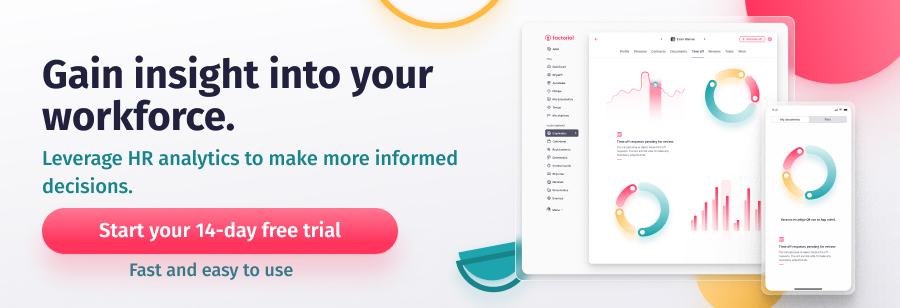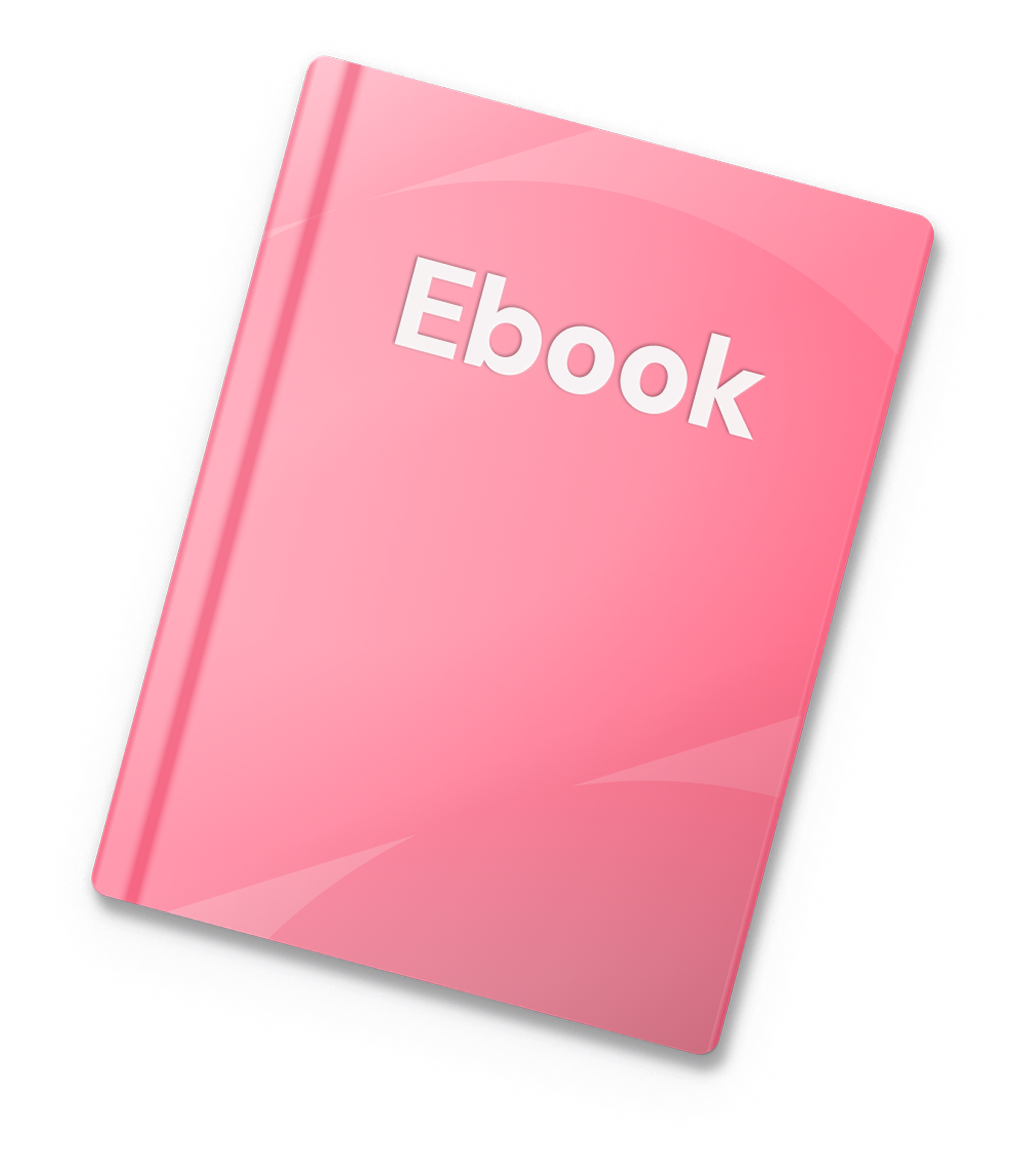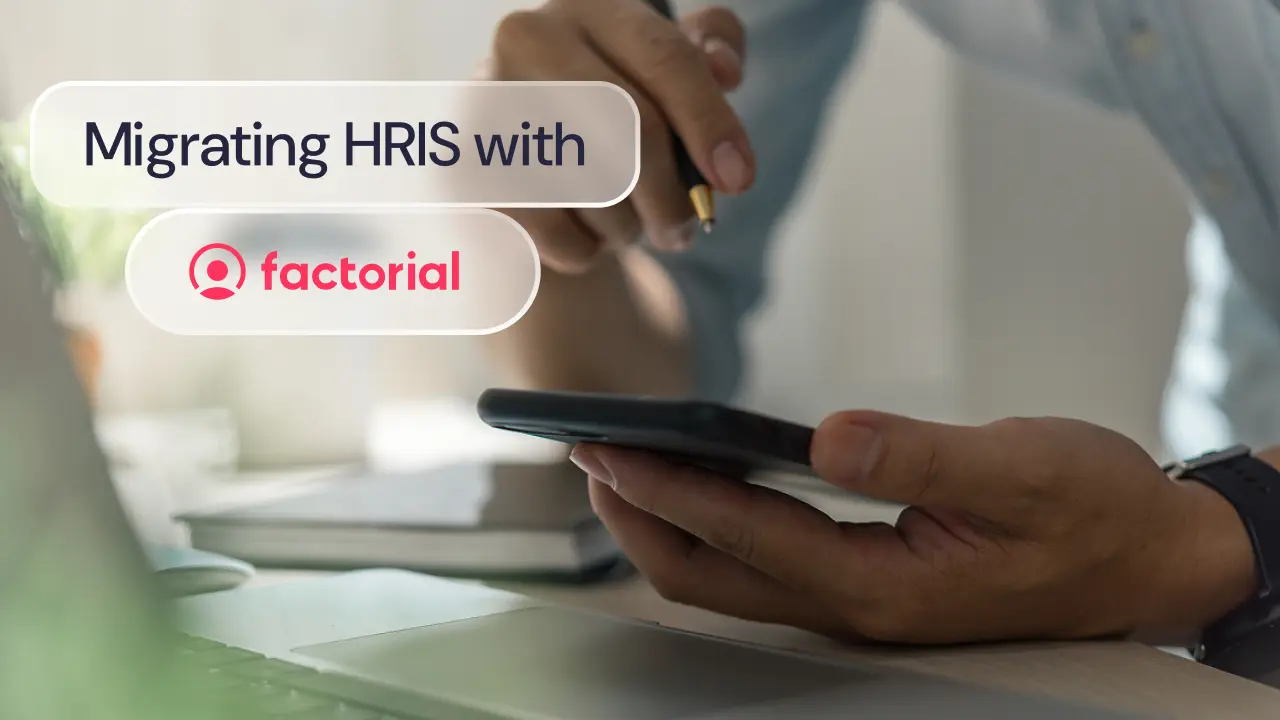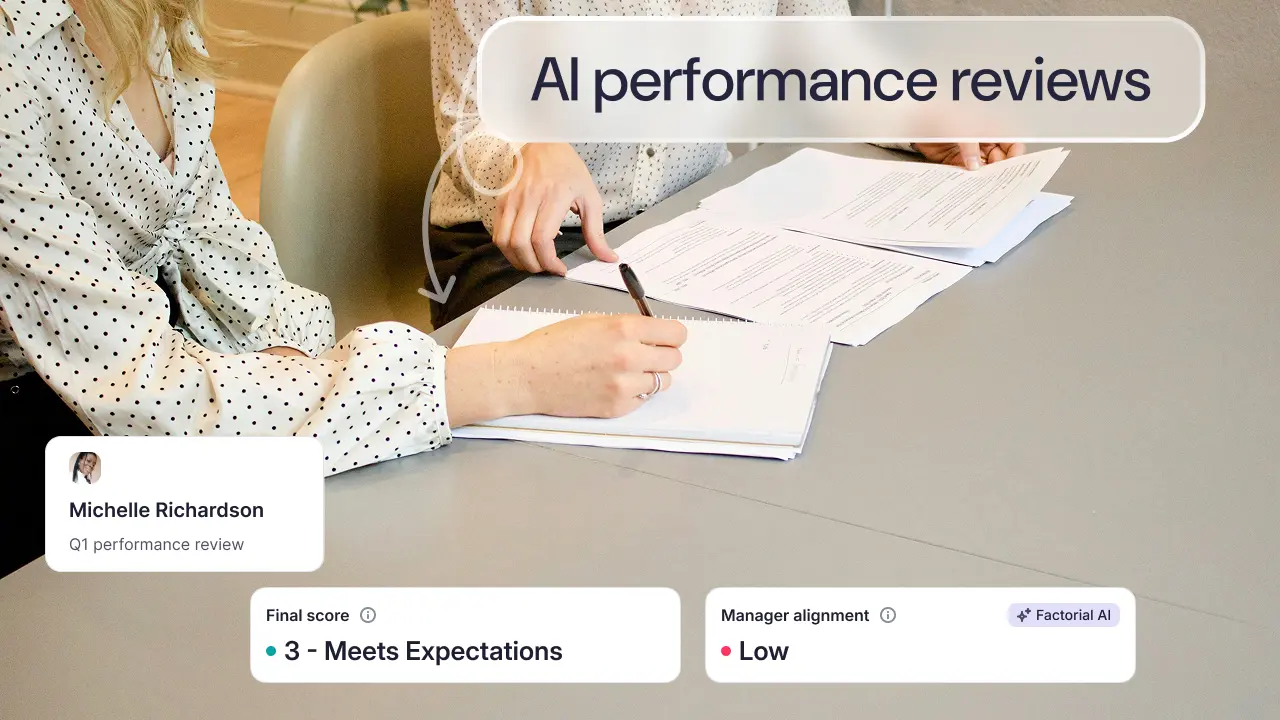Having access to the right human resources data can have a positive impact on your business. You can use data to predict future behaviors, measure the impact of a range of metrics, and make better informed strategic decisions. As a result, companies are now realizing the value of using a robust HR analytics software solution.
Traditionally, companies relied on intuition to manage their workforce. However, major transformations in HR technologies in recent years have enabled companies to not only access important employee data but also use it to understand the impact of human capital management strategies on business performance. In fact, according to Deloitte, the focus is shifting from simply reporting data to enabling the business to make informed talent decisions, predict employee performance, and conduct advanced workforce planning.
Let’s take a look at how analyzing the right people analytics can help your business.
What is HR analytics?
So, what is HR analytics all about?
HR analytics, similar to people analytics and workforce analytics, involves gathering, measuring, analyzing and reporting data relating to the employees of an organization. This might include HR reports relating to performance, employee engagement, turnover and absences, for example. The aim is to use this data to make more informed strategic decisions that improve critical talent and business outcomes, such as improving internal processes and promoting a more positive employee experience.
Think of it as a data-driven approach to human resources management. With the right HR analytics software, you can measure company and employee objectives and keep the entire company moving in the right direction.
You can also use analytics in HR to:
- Align the work of your entire workforce and keep track of progress and results
- Implement effective workforce planning strategies
- Manage employee performance and productivity
- Build equitable compensation and benefits packages
- Conduct skills gap analyses
- Identify workplace trends and predict future behaviors
- Boost learning and development, upskilling and reskilling
- Improve the candidate and employee experience
- Identify inefficiencies and areas for improvement within the workforce
- Improve retention rates and reduce turnover and associated labor costs.
How to get started with HR analytics
To get the most from your HR analytics, you need to:
- Collect, store and consolidate the right data
- Access data when needed
- Train your staff so that they know how to analyze the data you have collected
- Establish benchmarks and identify areas for improvement
- Continuously monitor your data and your progress towards established KPIs and make adjustments where necessary.
Let’s take a look at these steps in a bit more detail.
Collect, store and consolidate the right data
The first step is to collect data from a range of sources, such as different HR systems, Excel spreadsheets, and paper records, and consolidate it in a centralized repository, such as an HR analytics software solution. This will enable you to have access to all data from the same platform so that you have a single source of truth.
Access data when needed
It’s also important to be able to visualize your data whenever needed so that you can analyze your metrics and easily identify growing trends before they become an issue. A user-friendly HR dashboard provides you with a visual representation of all your data so that you can keep your finger on the pulse of your business without rifling through endless reports and spreadsheets to find what you need. For example, you can easily get real-time information about key HR metrics such as attrition rates, time-to-fill, and cost-to-hire.
Train your staff
It’s all good and well having access to the right data, but unless your HR department knows how to analyze this data, then it is a waste of time. It’s vital that you provide your team with the right HRIS training, such as obtaining an HR analytics certificate from an accredited institution. Most software solutions these days are very accessible, but the right HRIS systems training will help you make sure all employees are aware of how it works and how it can make their work easier.
Establish benchmarks
Once your staff is fully trained and your HR analytics software is up and running, you need to identify which metrics you need to improve, then set HR benchmarks and objectives to get you where you need to be. This might be improving employee performance, boosting retention, or reducing cost per hire, for instance. The key is to identify which areas are currently having a negative impact on your business so that you see the best possible return from your chosen people management software solution.
Monitor KPIs
Once you’ve established your benchmarks and metrics, it’s important to monitor your HR KPIs and use analyzed data to identify inefficiencies and potential risks, then make strategic adjustments in order to improve your internal process so that your business runs smoothly and efficiently. This is what’s known as predictive analytics – where you use technology to interpret your data in order to predict future outcomes – and it is a highly valuable decision-making tool.
How to use HR analytics software
We’ve seen the basic steps involved in HR analytics software. Now let’s take a look at a few practical applications of using an HRIS or HR SaaS to manage your workforce metrics.
The following as just a few examples of how HR data analysis can help you transform your HR processes and drive continuous improvement in your organization.
Recruitment & hiring
Predictive analytics software for HR can improve your recruitment and hiring processes in a number of ways. You can use predictive modelling systems to source and locate talent based on labor market data. You can also use predictive analytics software to identify the skills and experience required for each position within your company.
Workforce planning & management
Another key area where the right HR analytics software can help you succeed is workforce planning.
Data on employee preferences, skills, and aptitudes can help you align individuals with the right roles. It can also help you identify any skills gaps that need to be addressed. You can use data to identify potential leaders and strong/weak performers. Plus, HR analytics can help you identify employees looking to make a move in their careers, helping you manage your workforce in the most efficient way. All this helps you boost productivity and predict future employee performance and engagement.
Predicting attrition risk
The final, and perhaps most widespread, application of HR analytics software is predicting attrition rates. For example, you can use software to analyze responses to employee engagement questions in order to determine which employees are happy, and where there might be potential causes of high turnover rates. You can then use this data to redefine job roles and opportunities where needed.
Top 10 HR analytics software
If you have decided that now is the right time to invest in HRMS software then you are probably wondering which of the many HR people analytics software solutions on the market would most benefit your business.
With that in mind, we have put together a list of 10 popular HR analytics solutions to help you decide which HR solution would be the best fit for your organization.
Factorial
With Factorial’s all-in-one software solution you can manage your business more effectively using reliable data sources. Our HR analytics software provides you with access to a wealth of valuable data. Plus, you can visualize your metrics and manage your automatically generated HR reports straight from your HR dashboard.
Aside from being an effective HR analytics platform, Factorial’s comprehensive solution also includes the following features:
- Talent acquisition platform
- Performance management tools
- Time tracking, absence management tools and an employee clock-in system
- Expense management tools
- HR onboarding software
- Learning and development tools
- Employee database software and tools for managing employee files
- Applicant tracking system
- Payroll software
- An intuitive and user-friendly employee self-service portal that allows employees to access a wide range of HR-related information and services.
With Factorial’s HR analytics software you can track all forms of employee information collected using these features. Plus, you can use the data you gather to generate a range of valuable reports and analytics based on your established KPIs. The solution has everything you need to get you started with an effective HR analytics model that gives you the results you need to grow your business.
💡Bonus: Download Factorial’s free People Analytics book to unpack data that is impacting your team and how to reshape your talent management approach.
Visier HR analytics software
Visier is a Canadian data aggregation service that sells software for workforce analytics and workforce planning. Its HR analytics software connects to different systems and connects them into one HR BI tool.
Visier brands itself as an actionable people analytics insights platform that shows trends in workforce data. It also enables you to answer questions about what drives performance and productivity as well as other HR outcomes.
Pros of the software include that the software is very responsive, and you can export data in a number of formats. There is also no set-up fee. However, the mobile application is limited, and the algorithms work best with large volumes of data, so it is not ideal for small businesses.
Python
Python has become the most popular programming language for artificial intelligence and machine learning applications. As a result, a wide variety of AI development and analytics tools have been developed to automate complex data engineering workflows so that companies have access to HR analytics systems at scale.
Key features are that you get fast data analysis, and the coding language is easy to learn. Drawbacks of the solution include that there is a lack of statistical models, and it is easy for end-users to accidentally break the code. Performance has also been reported as being relatively slow.
Papaya Global
Papaya Global is an automated SaaS platform that serves as an end-to-end global workforce management solution. The platform supports all employee options (payroll, EoR, contractors), and consolidates your global workforce data into one single view for your entire international team.
In terms of HR analytics, Papaya Global delivers deep insights into your workforce and integrates with popular work management tools. Smart technology enables you to identify trends and review key metrics over specific time periods. However, the software can get expensive depending on the services you require and the number of employees you have.
ChartHop HR analytics software
ChartHop is a dedicated people analytics software focused on workforce planning and the sharing of feedback across teams. It was designed from the ground up to make it easy to surface various kinds of analytics for common HR problems and questions. The solution includes modules for headcount planning, performance management, compensation and employee experience management.
Key features include that the software is easy to integrate, and it includes a rich library of analytics templates to get you started. However, it’s not easy to set goals with the solution and the UI feels a little outdated.
R HR analytics software
R is one of the most popular programming languages for statistical analysis queries. It runs advanced analytics on extremely large data sets which makes it ideal for large businesses. It also supports a wide variety of third-party tools and recipes for HR analytics use cases. The basic tools are available for free as open-source software.
This is a good option if you have experience with statistical and analytics programming language and you work with large data sets. However, it may be a bit complex for smaller businesses with limited programming experience.
Zoho People
Zoho People is a cloud-based HR software solution that you can use to manage a range of HR processes. The software has a particular focus on workforce analytics. It has been designed for small, medium and large businesses.
Features include document management, email integration, and employee self-service management. You can also use the solution to manage a range of internal processes including payroll, performance management, recruitment, and training.
Users have, however, reported that the mobile app is prone to occasional errors and the software as a whole takes time to get used to. The portal is also very busy.
Tableau HR analytics software
Tableau is an integrated HR analytics solution that helps you analyze key business metrics and generate meaningful insights. The solution enables you to collect data from multiple source points such as SQL databases, spreadsheets, and cloud apps like Google Analytics and Salesforce.
Tableau’s live visual analytics and interactive dashboard gives you access to relevant insights and users can analyze data across regions, territories, demographics and more. The software can be customized to a range of industry requirements. Users can also view and analyze data on their Android and iOS smartphones with the Tableau Mobile app.
Drawbacks include a lack of version control, and reports are not automatically refreshed. This solution might work if you are looking to analyze specific niche areas only, but it is far from being a comprehensive solution.
Crunchr People Analytics
Crunchr is a SaaS solution for people analytics, strategic workforce planning and HR dashboards. It provides actionable insights across all HR domains. Crunchr’s in-built data lake consolidates data from different systems into one clean place and all the relevant metrics are pre-built into the solution.
However, recruiting analytics could be better and there is a lack of advanced compensation-related KPIs. There is also a lack of features relating to local benchmarks and there is no ability to create a custom dashboard to date.
Microsoft Excel
Excel is a good option if you have a limited budget. The spreadsheet standard is one of the best options for translating complex data into a form that is immediately understandable. Microsoft continues to update Excel with programming tools for capturing information from various systems. You can generate reports automatically and share them across teams. There are also hundreds of third-party HR analytics templates for Excel.
Drawbacks are that you have to enter data manually which is time-consuming and there is an increased risk of human error. The software is also incredibly limited in terms of analysis. Although Excel can be a powerful solution, software created specifically for HR analytics is a far better choice.
Finding the best HR analytics software
The most important factor when deciding on a solution is choosing the right predictive analytics software for HR. You need an employee analytics platform that helps you track, collect, interpret and analyze the right KPIs. This will help you create effective benchmarks so that you can make well-informed decisions about your future business strategies.
You also need a solution with a user-friendly HR dashboard so that you can manage every aspect of your growth. That way, you can easily spot growing trends and address potential issues before they become a problem. This will help you improve workforce productivity, retain employees, and ultimately create a healthy, motivated work environment.
Ideally, the solution should be customizable and scalable so that you can adapt it to your unique processes and expand capabilities as your business grows. You also need to be sure that the platform provides you with quick and easy access to real-time data. This will enable you to proactively anticipate changes, rather than simply react to them.
Finally, make sure the solution you choose for your business includes features for measuring employee performance and evaluating risks and costs. You also need tools for monitoring workforce development and goals. That way, you can be sure that you get the most from your HR analytics software solution.



